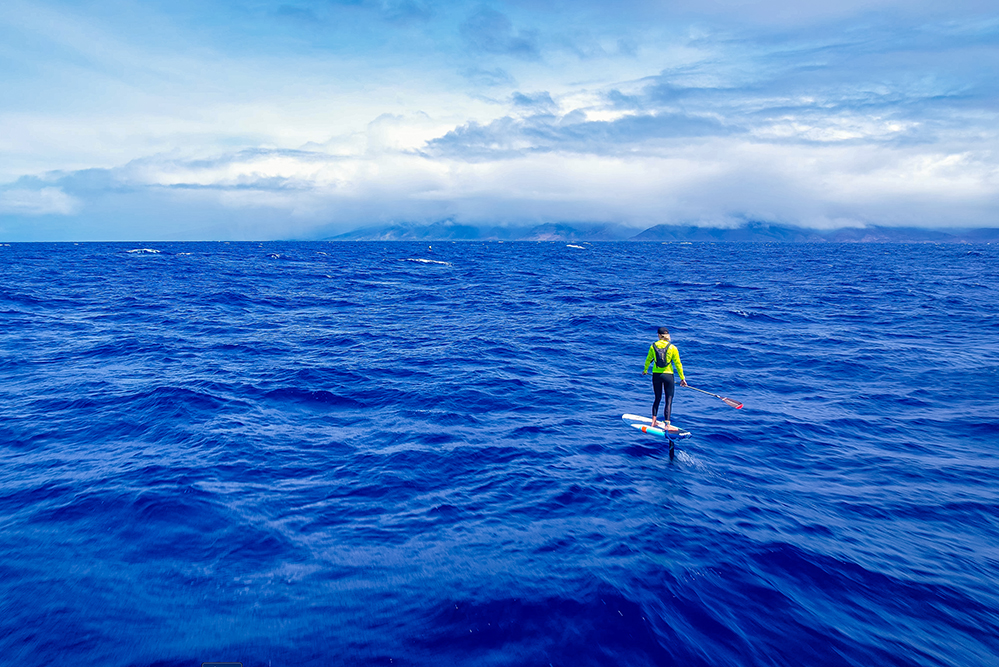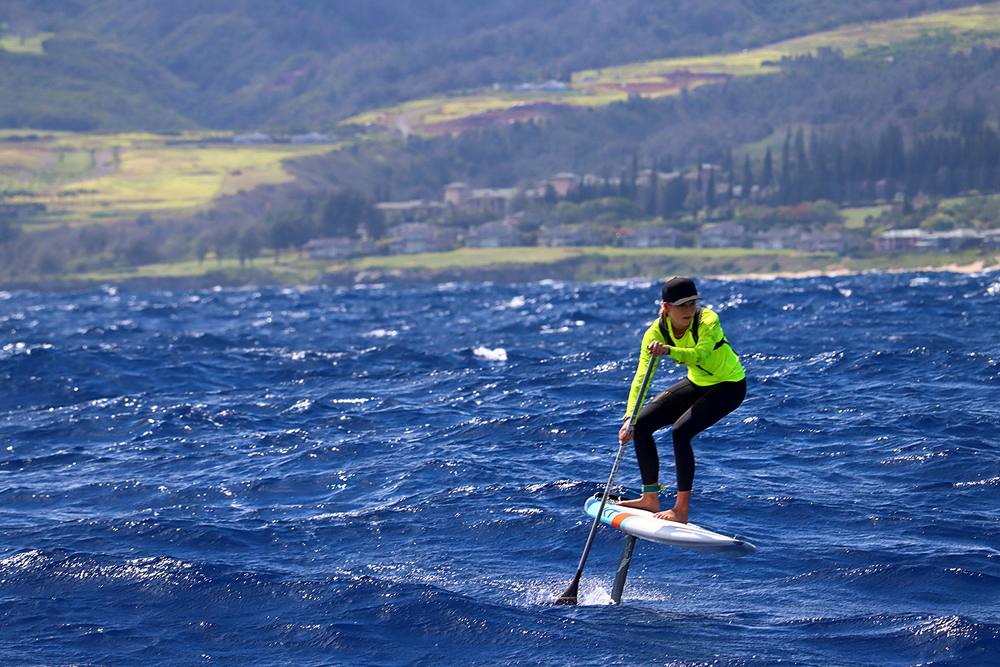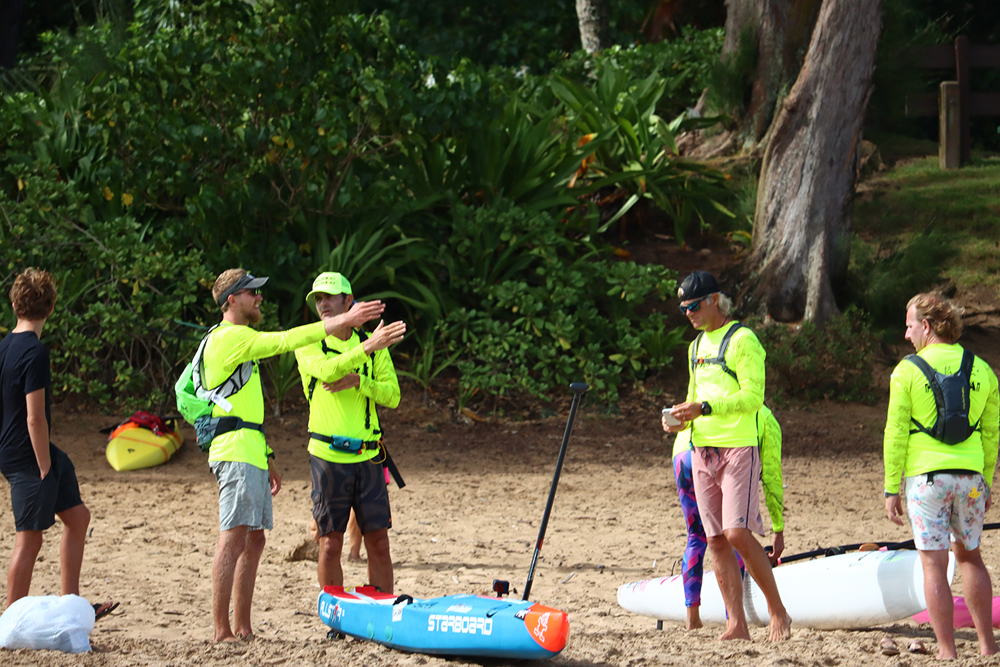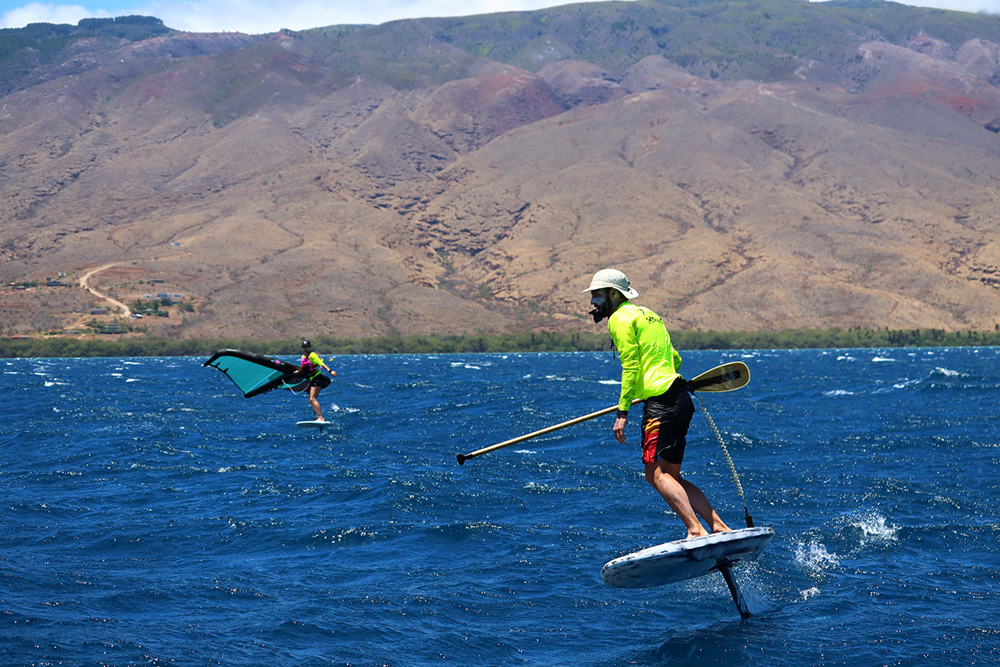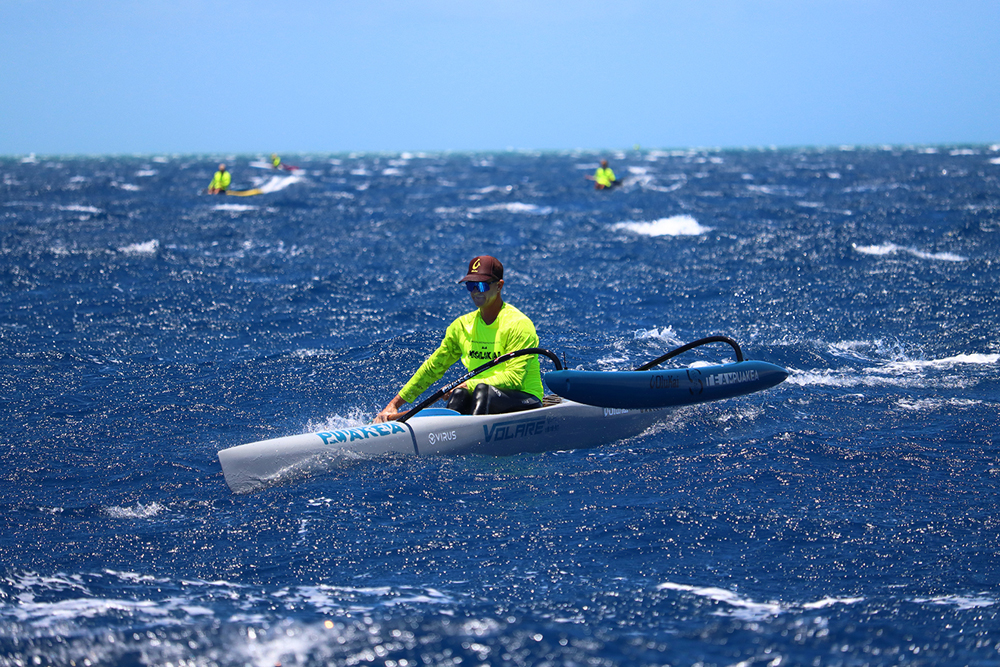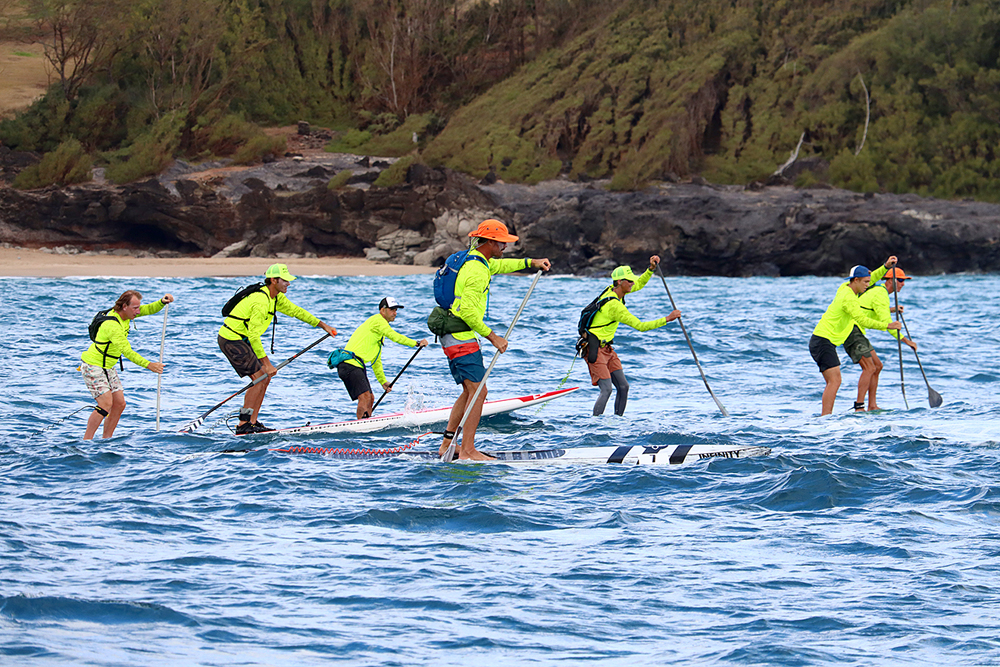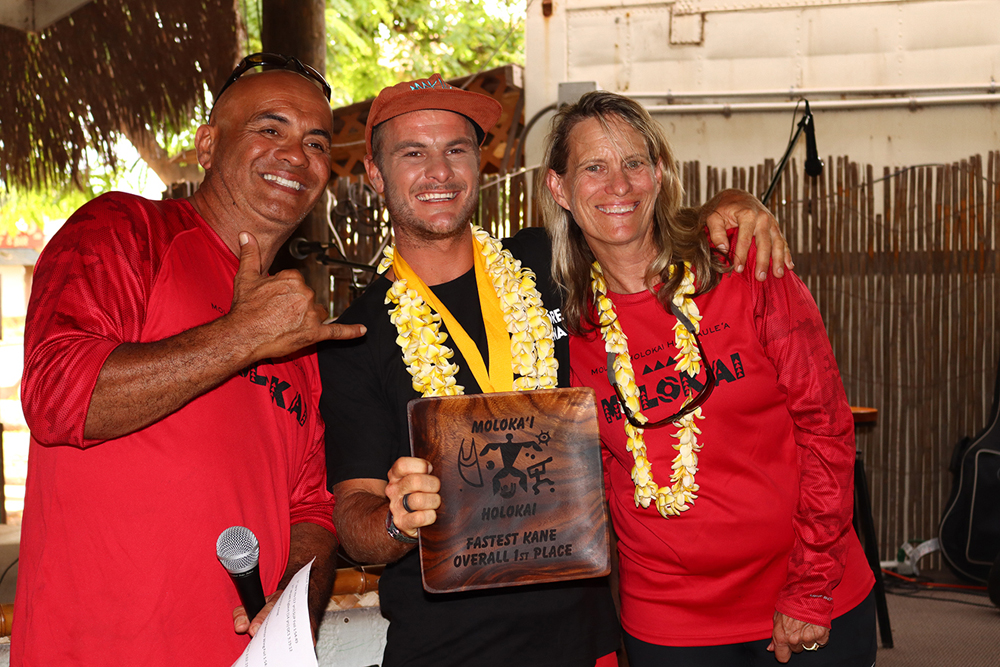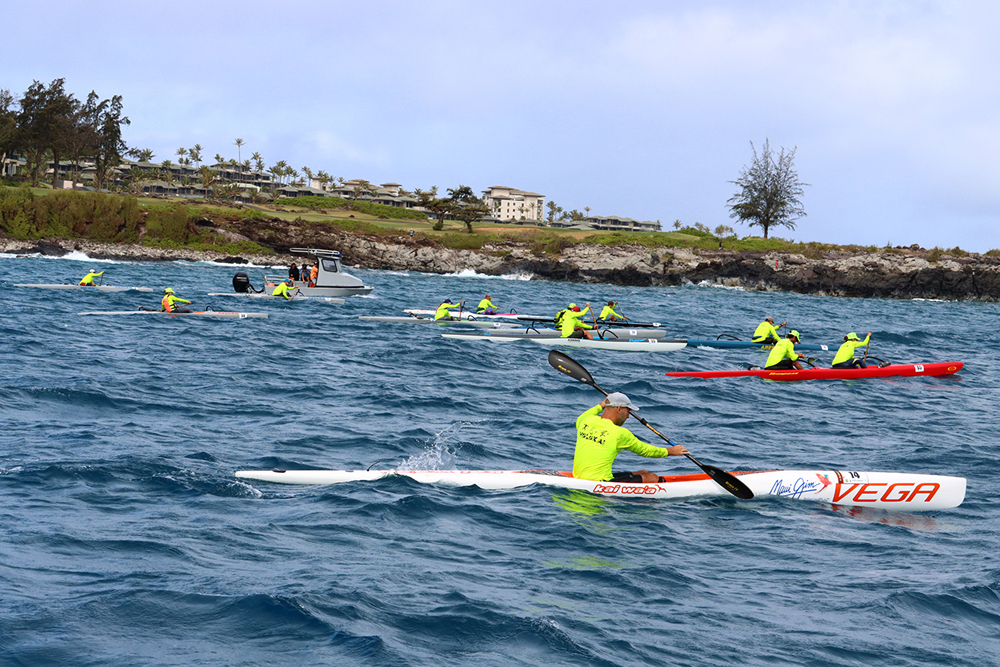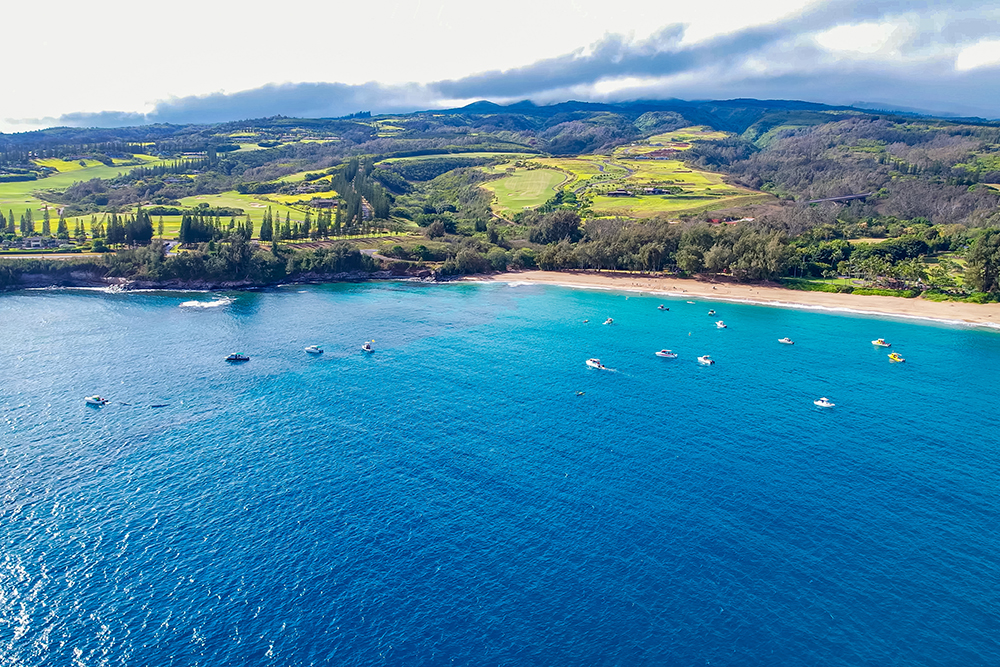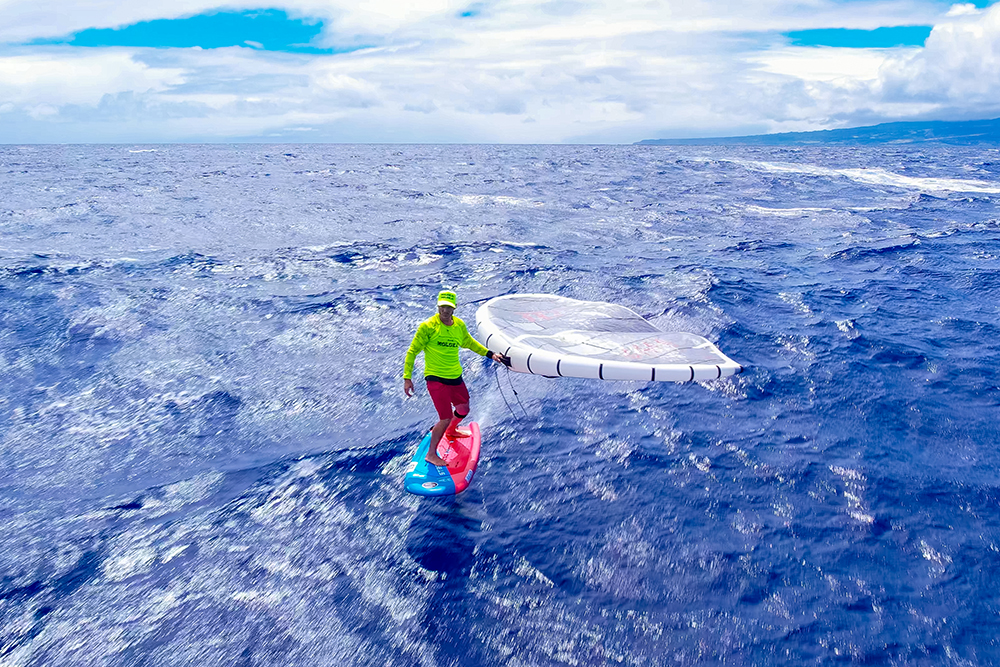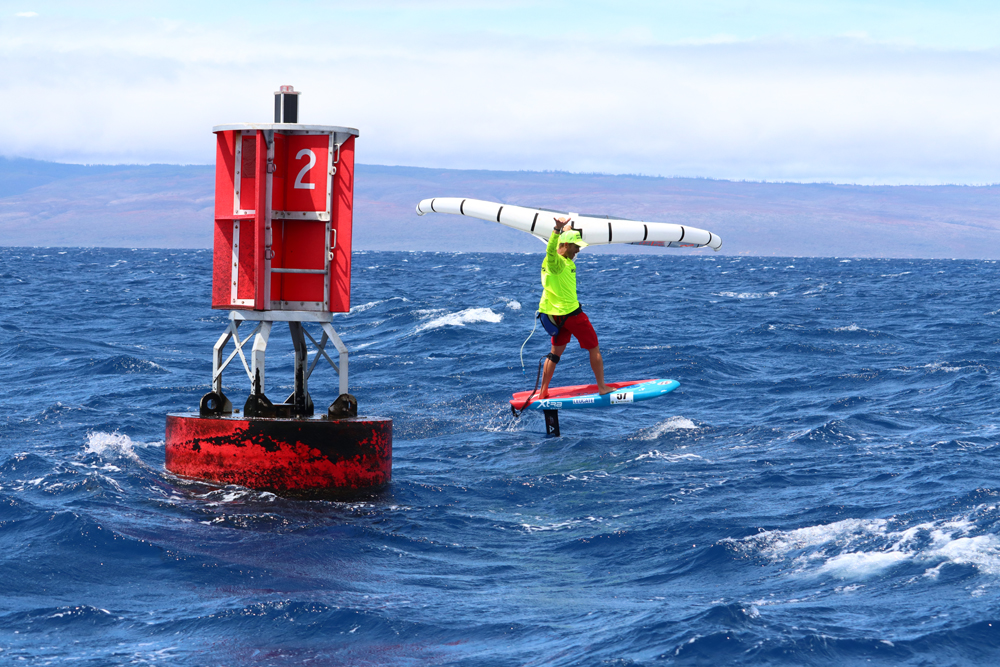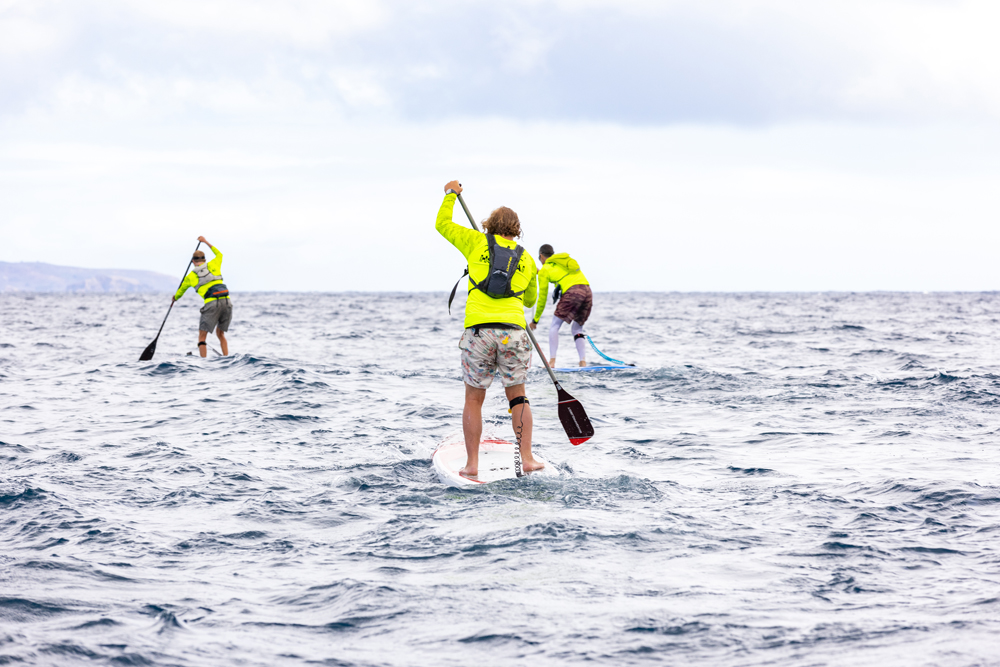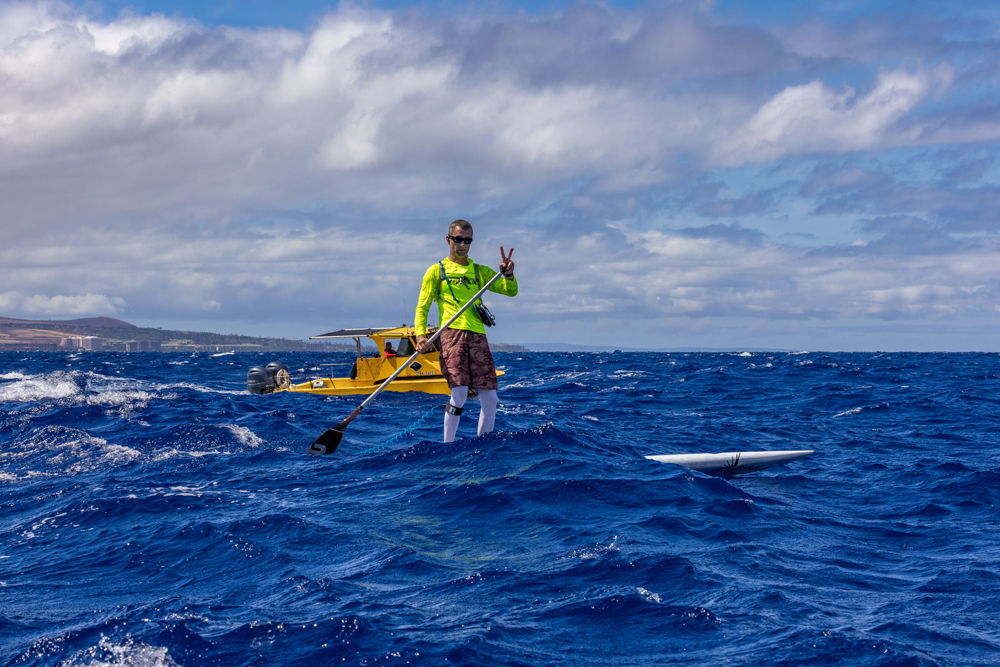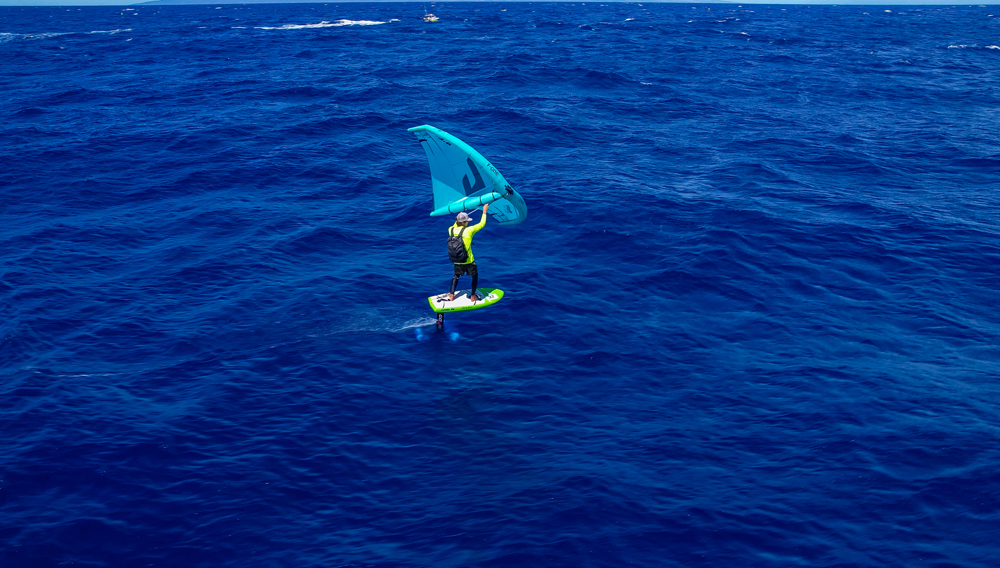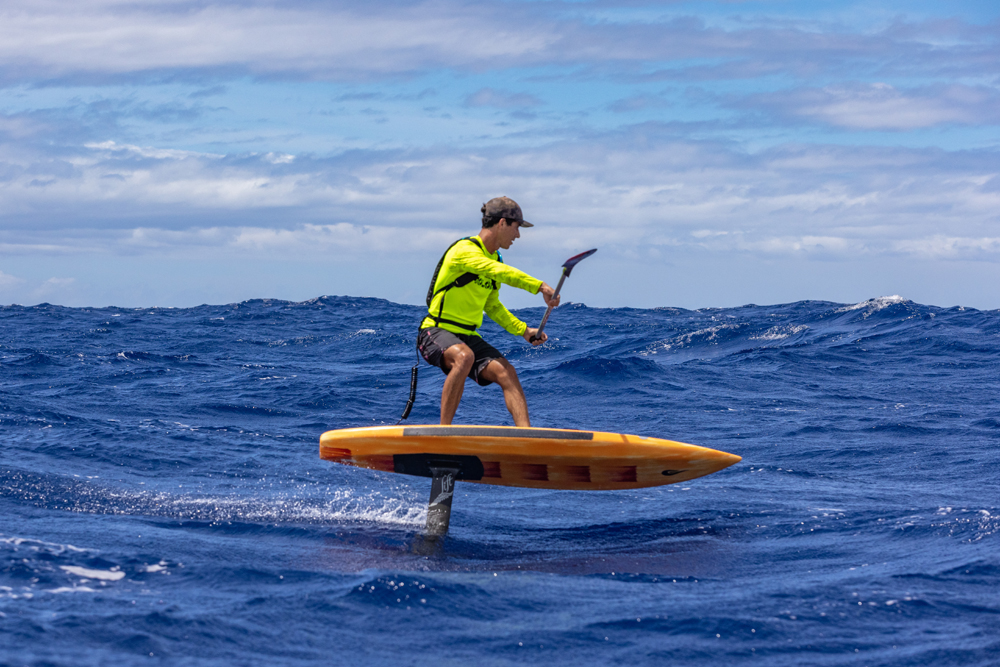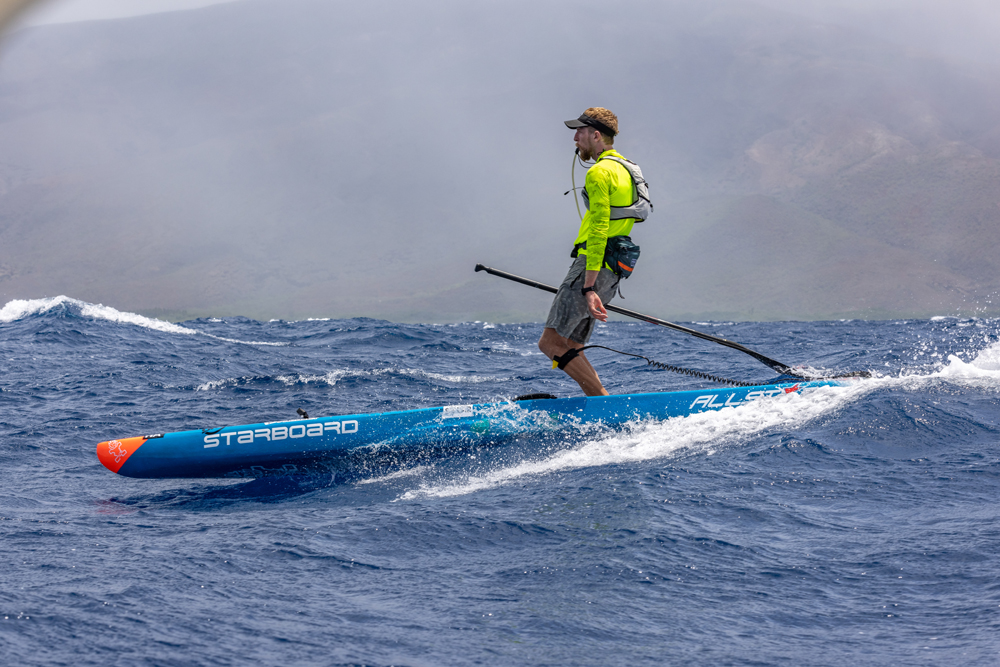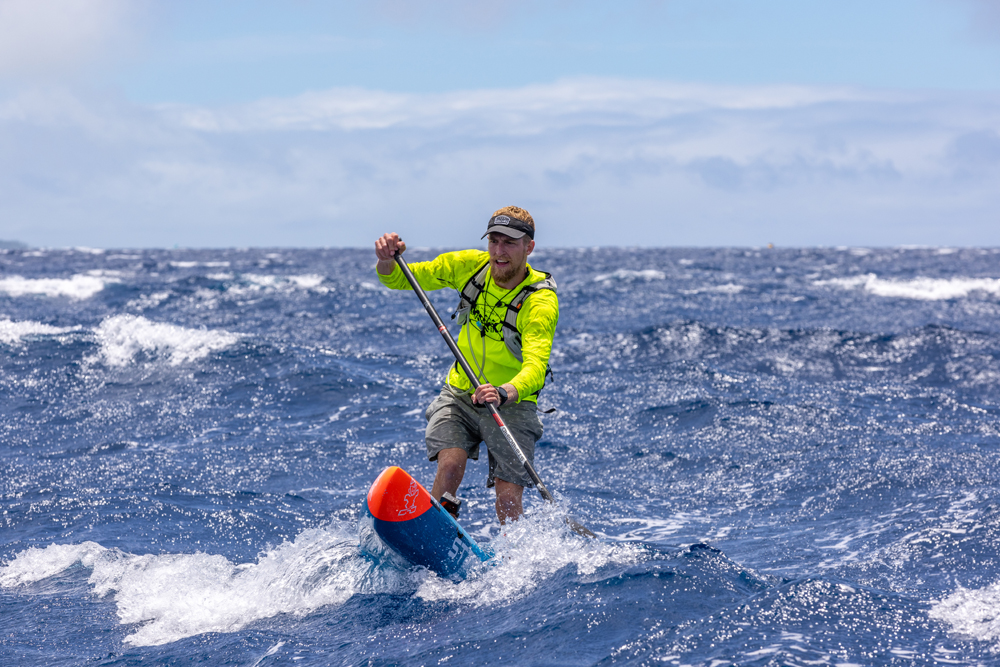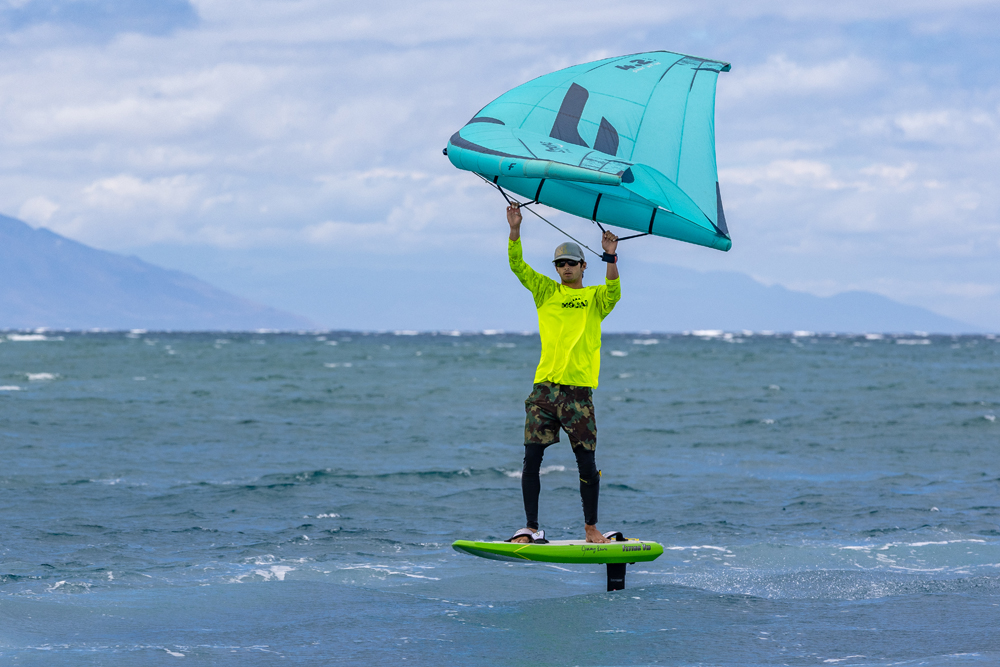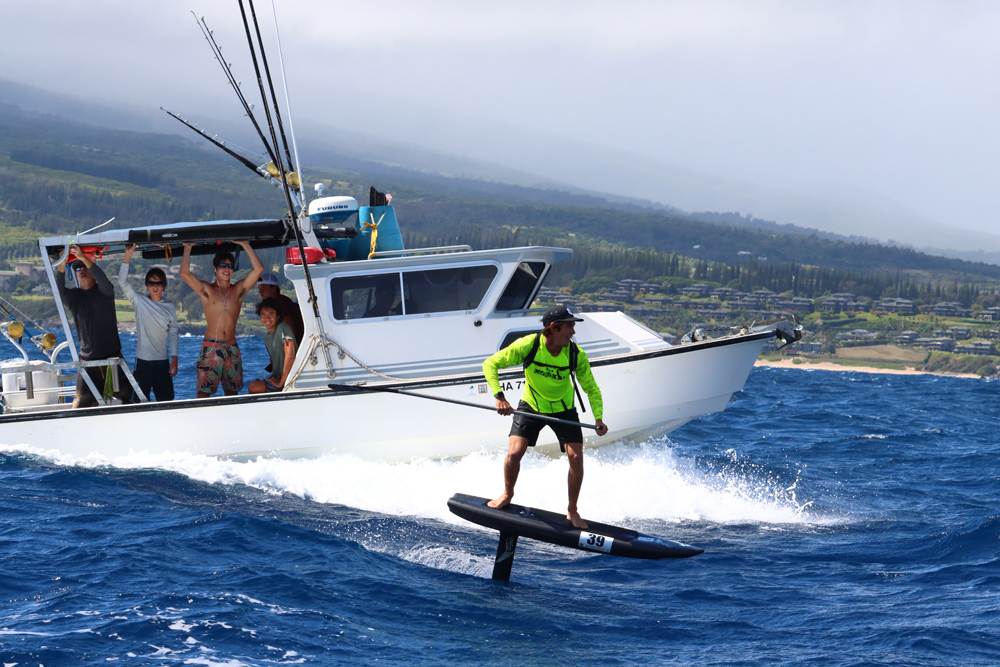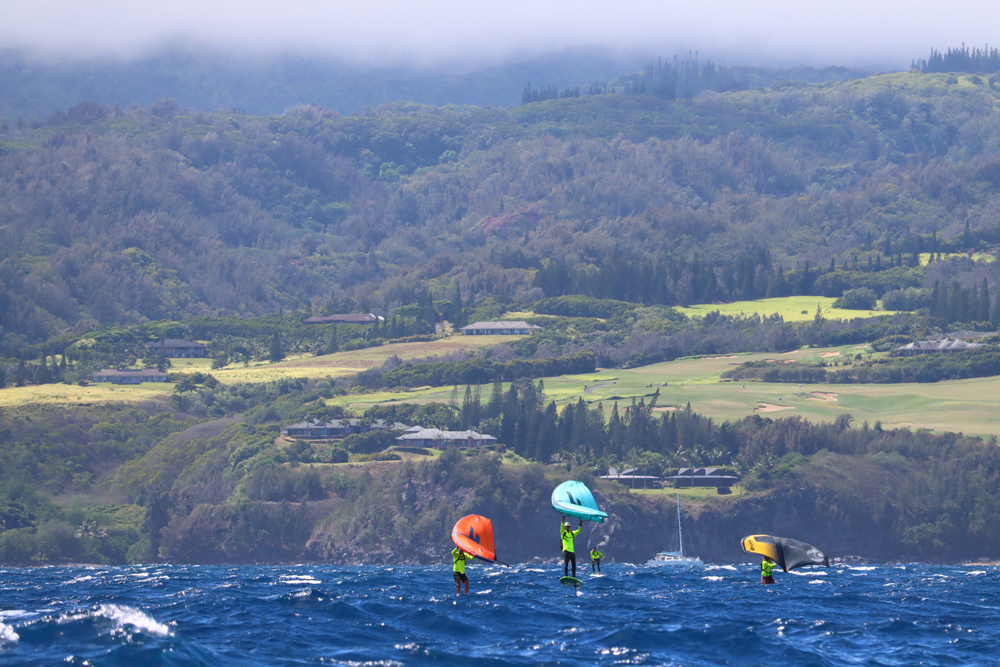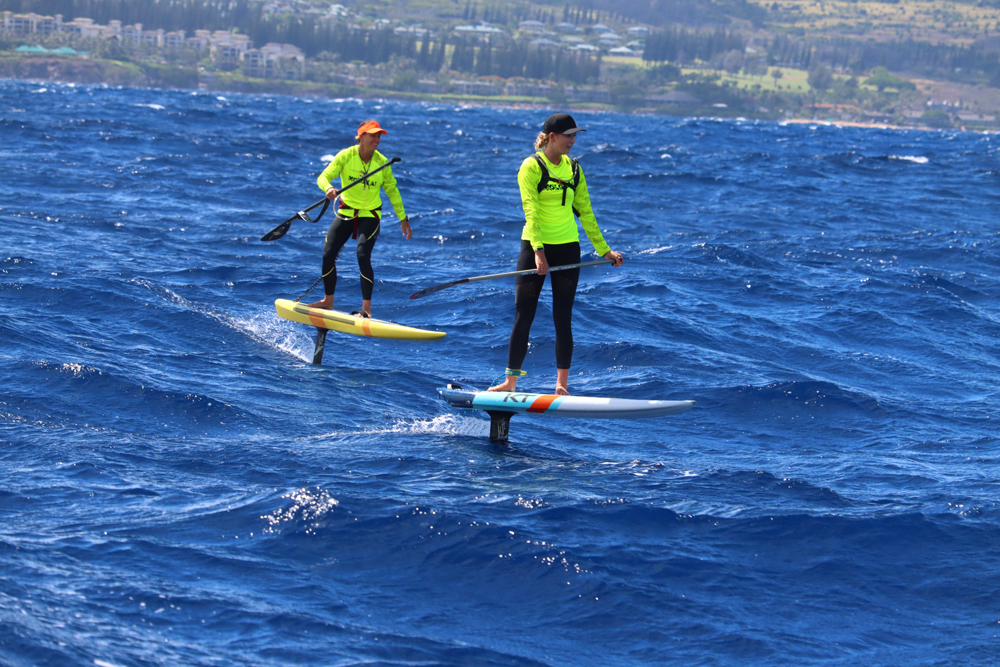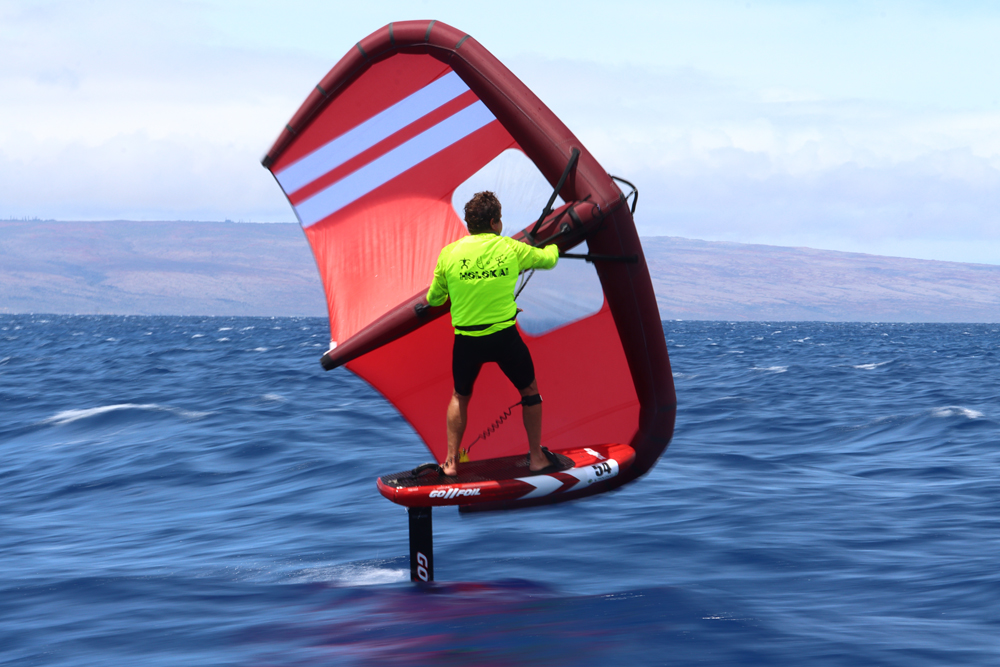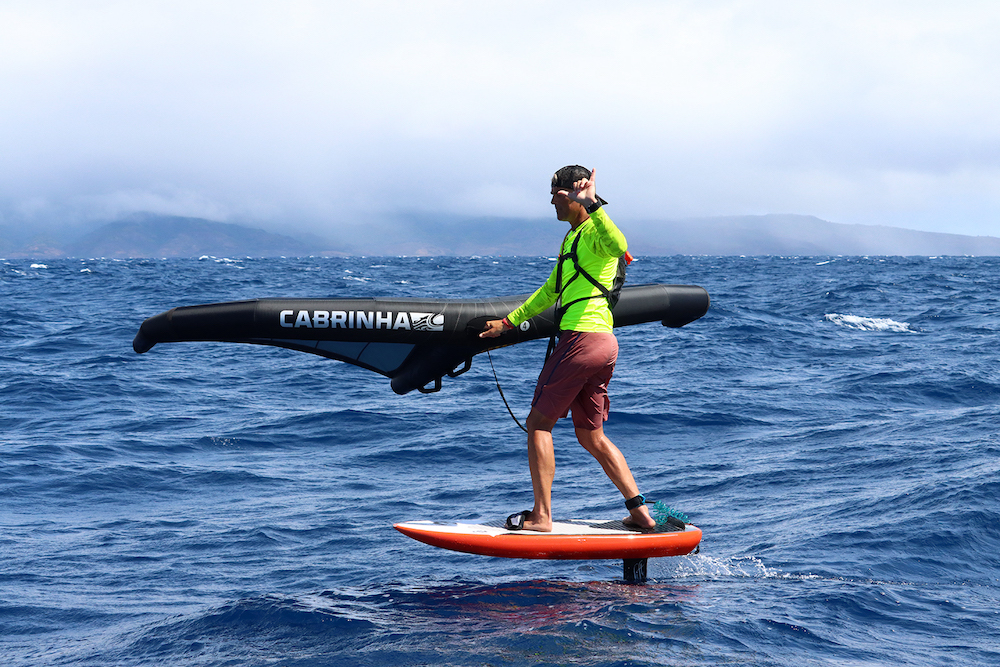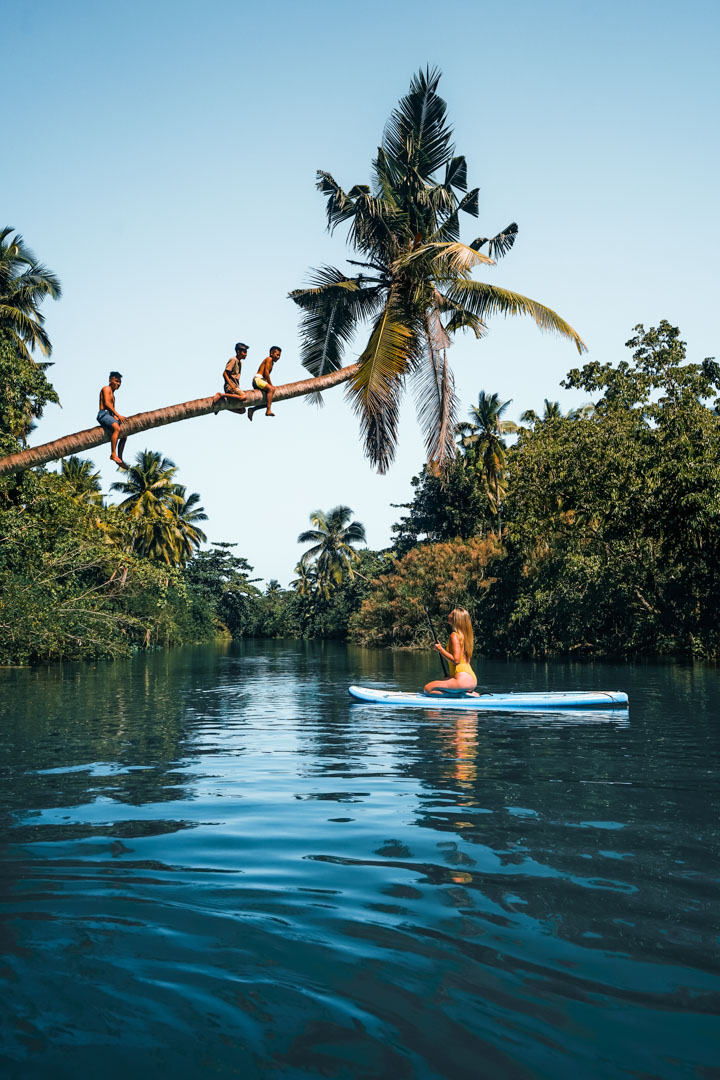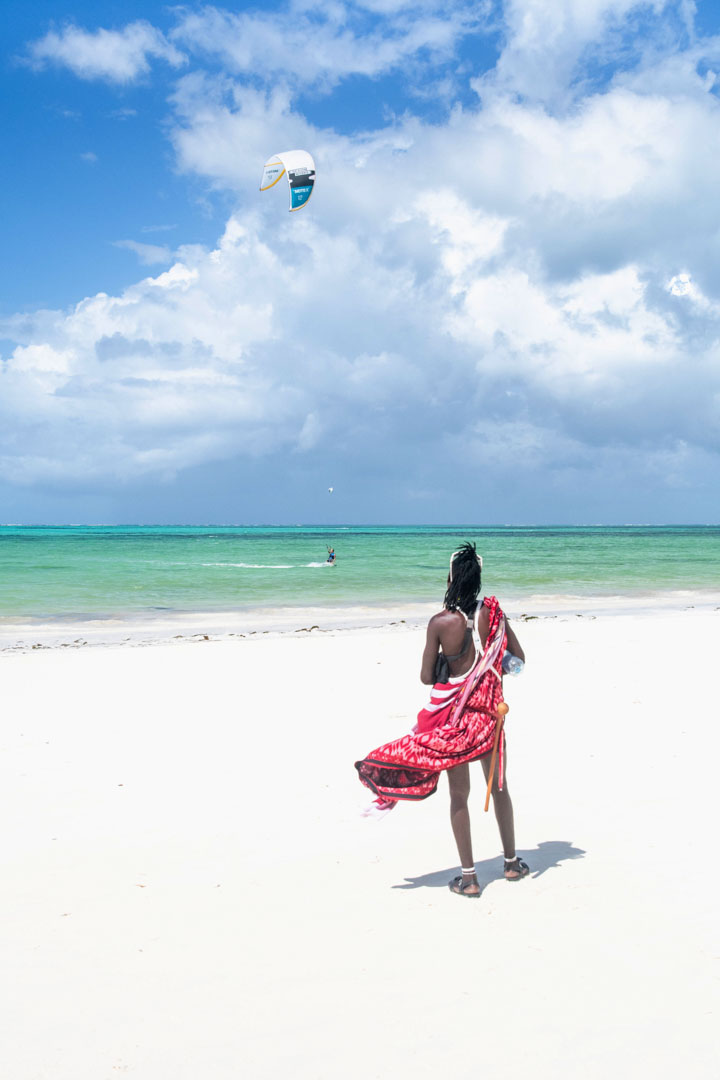Three and a half movies, a few magazine articles, and some emailing and you're there. That's how long it takes to fly direct from Newark to Kahului, Maui. Soon after the plane touched down, I was trying to figure out the best way to stash my wing board and foil into the scarlet red mid-size that would be my transport for the week.
From the airport I drove straight to Kanaha to check the wind and hopefully get out for a quick session. As soon as I parked the car I looked up to see Gerry Lopez stepping out of the truck next to me. "Hey, you here for the movie?". The Maui Film Festival was happening the same week and Gerry's documentary was the opener. "Yeah, you gonna watch it?", he replied. "Absolutely! How'd it come out?", I asked. "Well, there's way too much of me in it, but other than that it's pretty good." Gerry's humble persona continues to be one his most impressive hallmarks.
We pumped up our wings and strutted over to the launch. I was eagerly awaiting the opportunity to wing with this hero just moments after reaching the island. I played "follow the leader" cruising out and back in his wake for the next few hours studying his style and inspired by his passion to continually learn new sports despite his age and his legacy as a waterman.
Kanaha is an amazing place. The energy of this beach-front state park is inescapable. The immense trees and spongy lawn make it the most idyllic setting for the community and culture of the Maui wind scene. I was on site every morning by 10:00am to watch the show unfold. The same cars would arrive every day at the same time backing into the same spots beside the same cars. Each vehicle had a custom-designed interior with DIY board racks made from PVC piping optimally designed for carrying and transporting windsurfing gear. I was generally on the early side of arrivals and overly excited to get on the water. I was only on the island for a short stay and wanted to make the most of every day.
The first morning at Kanaha I was on the water by 10:00am wondering "Where is everyone?" There was certainly enough wind. Perhaps everyone else was simply pacing themselves for the long day ahead? About an hour later, I started to see the line of windsurfers and wingers queueing up at the launch making their way into the water. It wasn't long before the beach and near shore areas were filled with wings, sails, and kites enjoying the 25-30mph summer trades. I foiled past countless numbers of large sea turtles taking extra precaution not to collide with any of them. I even spotted a few manta rays cruising over the reef below inhaling massive amounts of krill as they passed by. When I ventured out to the blue water, I could see standup paddlers and foilers finishing Maliko runs as they saw toothed their way toward the harbor entrance to complete their runs. Between all the activity happening above and below the surface, the tropical blue-green color of the water, and the north side of the Mauna Kahālāwai volcano in the background, it was clear I had made it to Hawaii.
Every day at Kanaha is like ground hog day. The temperature each day is the same, the wind speed and direction are the same, the sky and clouds are the same, and the overall vibe is the same. The weekends get a little busier, but Monday through Friday seem to blur together with very little variance from day to day. There's a tight knit community of wind addicts who seem committed to spend the remainder of their days on earth practicing the daily ritual of parking, rigging, riding, and sharing stories in this sanctimonious space.
When I returned on the second morning, I was on the early side again and started slowly making my way down to the launch with my wing and board in hand. Just before my feet touched the sand, a man stopped me politely and said, "We saw you go out yesterday too and realize you may not know." "Know what?", I replied. "You can't sail before 11:00am." Ah ha, well that certainly put things into perspective. I had heard about that rule at places like Ho'okipa, but didn't realize the same rule applied to the entire coast. "Thank you for letting me know, now I know why I was out there all alone yesterday morning."
Being the new guy on the scene was fun. I was slowly being accepted into the community through my shared passion for the wind and my daily commitment to getting on the water. By the third day I was even extended an invite to a birthday party happening later that afternoon. "Celia is turning 50 today. We're gonna have a BBQ. Please stop by." Kanaha simply shined as a friendly and welcoming scene where anyone felt welcomed - that's what building community is all about.
I had traveled to Maui to participate in the Molokai Holokai Ho'olaule'a downwind race from the island of Maui to the island of Molokai - also known as M2M. The race started 23 years ago to benefit Youth in Motion, a non-profit organization working to empower, equip, educate, challenge and motivate youth through activities that engage and develop their mental, emotional, creative, and physical skills on the land and in the ocean. I registered for the race back in 2019, but like a lot of events, this one wouldn't happen until the pandemic had run it's course. Between then and now, wing foiling had come onto the scene and was now offered as one of the disciplines in the race. M2M is a 27 mile crossing from DT Flemming beach on the west side of Maui to the Kaunakakai Harbor on the south side of Molokai. In order to be mentally prepared for the crossing, I needed to spend as much time as possible acclimating to the conditions and building my confidence. The best way to do that was to make as many Maliko runs as I could leading up to race day.
The Maliko run is a 10 mile downwinder that leaves from the Maliko gulch, a natural V-shaped river mouth cliffed out on both sides that finishes in the flat waters of the Kahului Harbor. There's a small boat ramp at the gulch used to launch all kinds of paddle craft looking to downwind as well as jetski teams looking to get upwind to Pe'ahi when the surf gets big. My long time friend and fellow Lake Champlain standup paddler Spencer Bailey had lined us up with a shuttle ride to get us up to the gulch.
From the bottom of the gulch, it's a short paddle to the mouth. The wind and wind swell in front of you looks vicious. Huge waves crash against the rocks sending the spray violently sideways across the mouth of the bay. The wind steadily grows in strength as you approach the exit and move from prone paddling to standing. Once you're on your feet, it's an easy reach through the mouth into the side shore winds that would carry you away from land. The trick is to create as much distance as you can between you and the shoreline before making the turn downwind. There are a number of rugged points and shallow reefs between the gulch and the finish that you will want to stay away from. The thrill begins once you make that turn and commit to the line that will ultimately take you past some of the most iconic points on Maui's north shore.
There are a lot of wind sport athletes and industry entrepreneurs who make their home on Maui. It's not uncommon to run into any one of them on any given day. Personally, I put those encounters in the category of celebrity sightings of which there were plenty during my days wandering the beach and lawn at Kanaha. But even more enjoyable is the chance encounter with a celebrity on the water which occurred as I was passing Lanes - a popular surf spot just downwind from Ho'okipa.
I instantly recognized the hair, the posture, then the smile. Here comes Pete Cabrinha with a wing in one hand and a GoPro in the other. "Hey Pete!". I stepped on the gas and we raced each other the rest of the way. The run takes you a few miles from shore where the waves can be as big as school buses. The wing is hardly needed once you're on foil as the waves and current have all the energy you need to surf your way toward town. I cavitated and crashed on a wave just shy of Kanaha and watched my foil board weightlessly fly over my head and land foil first onto the canopy of my wing. "Shit!" The front wing of my foil left a large "L-shaped" hole just shy of the leading edge bladder big enough to put my fist through. Fortunately the wing was still operable and I was able to finish my run.
Later that day I visited a nearby shop to purchase some repair tape and pick up some essentials that I would need for the crossing. All participants are required to bring a VHF radio or cell phone, a mirror, a whistle, and a streamer. I met a nice staff person on the floor of the shop who showed me their selection of EPIRBs and suggested I consider one for added insurance and peace of mind. An EPIRB (Emergency Position-Indicating Radio Beacon) is a GPS device that's designed to be used in emergencies to locate persons in distress who are in need of immediate rescue. I declined on the purchase feeling confident enough with my cell phone, streamer, and mirror.
As I drifted off to sleep that night, I woke to the startling thought of what could happen should my foil puncture the bladder of my wing. With the wing deflated, I'd be at the mercy of the current in the channel and left to my own devices to prone paddle to shore, drift to Lanai, or radio for help. That thought shook me up a little as I reflected back on how easily my foil had cut through my wing just a few days before. Regardless of safety protocol, boats and equipment, each of us are responsible for our own safety. It was at that moment that I realized the value of an EPIRB and how foolish I was in not being better prepared for the day to come. That being said, I was confident in my ability to get across to the other side so I reset my race strategy and prioritized finishing safely over finishing quickly. My new plan was to cut a direct line across the channel then wing down the coast of Molokai staying within paddling distance to shore as a precaution. My line would take me away from the middle of the channel where the wind was a bit stronger, but would give me the peace of mind I needed to enjoy the race.
The day of the race Spencer and I woke up early and made our way to the west side of Maui. Downwinding is all about logistics knowing that you won't be finishing in the same place you started. There are lots of details to sort out with cars on either end, drop off and pick up, what to bring, what to leave at the finish, wallet, keys, phone, etc. All of these details are even further compounded when starting on one island and finishing on another.
As we approached the registration tent, we took notice of the various paddle and wind craft staged on the lawn that would be making the crossing. Outrigger canoes, surf skis, standup paddle boards, foil boards, and wings occupied much of the beach area. The racers were easily detectable by the familiar bright yellow jerseys everyone was required to wear for the race. Conversations came easily as most people were eager to find out who was riding what and what their game plan was for getting across. Most of the participants were from Hawaii and many of them were familiar faces and names. Zane Schweitzer, Andrea Moller, Connor Baxter, Annie Reichert, Alex Aggerra, and a host of other athletes were gathered around the start area getting hyped to start the race.
The east side of Molokai stood in the distance with narrow columns of rain squalls slowly moving down the channel. It was the first morning during my visit that wasn't dry, warm, and windy. The rain has a way of knocking down the wind making everyone a bit skeptical of the amount of assistance we'd receive from mother nature. Connor was in the stock standup paddle class, Andrea and Annie were standup foiling, and Alex was on a wing. There were at least 30 other competitors strewn about the beach area making final preparations before getting underway. The plan for the start was to send the standup paddlers out first, followed by the surf skis, then the outriggers, and finally the foils and wings to bring up the rear.
The wind was still very light when the first wave of competitors pushed off. I hit the water and paddled toward the wind line which seemed to be sneaking it's way further and further away as I approached. There's nothing more concerning than seeing glassy wind chop in every direction when you're desperate for a gust to get you on foil. I had left the beach with what I thought was plenty of time to get out to the start line before our 10:00am start, but time was moving fast, and I wasn't making much progress. Eventually I got my gust of wind and was up and riding toward the center of the channel. I could see the media boat and the band of standup foilers up ahead who were making their way down from their start line which was slightly upwind from DT Flemming. I passed the media boat, threw a shaka to captain Keith Baxter, and set my line toward Molokai.
The waves in the channel were significantly bigger than what I experienced from Maliko. The prevailing wind and current was running down the channel at a feverous pace. As the swell energy pinches itself between the two islands, the speed of the current increases and the waves build in amplitude. Unfortunately the wind was still light making it difficult to keep the wing from back winding against the apparent wind created by the pace of the current and speed of the foil on the larger waves. I maintained my strategy by foil surfing down and to the right linking bumps and edging toward Molokai. They call this run "the funest downwinder" in the world. Once I set my intention to enjoy the ride and focus on the beauty of everything happening around me, I was overcome by an immense feeling of gratitude for the access and ability to be in that place, having that experience, at that specific moment in time. The wait for the return of this race was over and after a 3-year hiatus, everyone in the channel that day was experiencing the magic of what wind and water can bring to this special part of the world.
As much as I was enjoying my solo introspective experience, I began to yearn for some human contact after the first two hours. Just as I rounded the east side of the island, the sky started to clear and the wind started to crank. The swell was doing that conveyer belt thing where the lines behind me got perfectly organized and the tops of the waves were starting to spit. As I stepped on the gas, I began to notice the faint hue of bright yellow jerseys on the backs of the paddlers who had left before me. The surface of the water was completely wind swept and the color of the water had turned a beautiful emerald green. I passed by the first few paddlers shouting words of encouragement then spotted my friend Spencer in the distance.
The foil provides a huge range of left and right maneuverability making it easy to swing to and away from shore. I raced inside and snuck up on Spencer pulling up along his right side and watched him glide down the face of a few perfect waves on his way to a second place finish in the stock class. It felt great to connect with him during the race. He was especially excited to be here that day and loves standup paddling more than life itself. The stoke on his face was unleashed when he saw me slide by. We'd be sharing a beer at the finish in less than an hour.
I headed back outside to find the slightly bigger wind swell and continued to enjoy what felt like a never ending limitless downwinding afternoon. My confidence was at an all time high for the day and the waves were perfect. I tried to burn the euphoric feelings I was experiencing into my brain knowing that at some point this run would come to an end. The large white roof tops of the harbor buildings were coming into view and it wouldn't be long before I would be rounding the red channel marker and making my way into the harbor.
The energy at the finish was all smiles. There were some record setting runs that day with Zane finishing first overall at just over 1:30. Alex Aguera was second overall, Kane de Wilde was third overall and first in standup foil (see more about Kane and his new gig in the next issue of SUJ). Connor set a new record in the stock class with his win and Annie Reichert was sixth overall and first for the women in the foil class.
I was fortunate to get a ride back with Keith Baxter on his new boat "Kanaloa" - a stunning 28 foot Molokai Cuddy power cat that can do 20mph upwind through massive wind swell. There was a helpful young guy standing on the bow of the boat who offered to help me load my gear. "Hey, thanks for that. What's your name?" I asked. "I'm Kane.", he replied. "Kane de Wilde?" "Yeah, that's me". Kane had won the standup foil class that day and is a phenom in the design and execution of all things foil. We had traded emails in the past and I was looking forward to catching up with him on our trip back to Maui together.
We finished tying down the rest of the boards and slowly pushed our way out of the slip making our way back through the harbor. Keith was about to have the most fun he'd have all day pushing the limits of what this new boat can do. By the time we got to the middle of the channel he was banking off the faces of oncoming waves with the timing and precision only a surfer can muster. [Jean Paul], a former professional windsurfer was sitting next to Keith with his fingers clenched tightly around the seat below. "Keith, I've never been so scared out here. I hope you know what you're doing". We'd all just flown downwind across this channel and now the waves had grown even bigger and we were knifing our way through their troughs and literally slashing their peaks from inside a 28 foot power craft. "This is nothing, you should see it when it gets really big", he replied. That's when his cell phone rang and without hesitation he picked it up and was now steering up and over the waves with one hand while chatting with Connor in the other. "Now he's on the phone!", exclaimed JP. It was time for Keith to enjoy his crossing and he was keeping us all entertained per usual.
Not enough can be said about the energy and effort that Clare Seeger Mawae and the rest of her Youth in Motion team put into organizing this event and making sure all of us had fun while getting across safely. The day after the channel crossing is filled with more races on Molokai from 1 to 10 miles and designed for all ages and abilities. The dates for 2023 are still yet to be determined, but will most likely be pushed to the second or third week of August. To learn more about the event or make a donation to Youth in Motion, please visit their website at youthinmotion.org. I look forward to seeing you all again next year.
Mahalo, Russ

